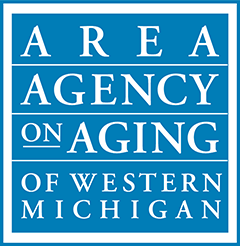What is Alzheimer’s Disease?
 Alzheimer’s disease is the most common form of dementia. Dementia is an age-associated loss of cognitive function that results from physical changes in the brain, typically caused by a loss of brain tissue (degeneration). Alzheimer’s disease is named after a German physician (Alois Alzheimer) who had a patient in her 50s that developed dementia. Because she was so young, Alzheimer stained her brain with silver chemistry (borrowed from the photographic industry) and revealed two abnormal structures. One was an aggregation of degenerating tissues outside of neurons he called senile plaques. The other was twisted filaments inside neurons that he called neurofibrillary tangles.
Alzheimer’s disease is the most common form of dementia. Dementia is an age-associated loss of cognitive function that results from physical changes in the brain, typically caused by a loss of brain tissue (degeneration). Alzheimer’s disease is named after a German physician (Alois Alzheimer) who had a patient in her 50s that developed dementia. Because she was so young, Alzheimer stained her brain with silver chemistry (borrowed from the photographic industry) and revealed two abnormal structures. One was an aggregation of degenerating tissues outside of neurons he called senile plaques. The other was twisted filaments inside neurons that he called neurofibrillary tangles.
For many years the only way to determine if a person’s dementia was caused by Alzheimer’s disease was to perform an autopsy and find senile plaques and neurofibrillary tangles in the brain. Over the last three decades we have learned that plaques are largely aggregates of a small protein called amyloid. The tangles are composed largely of aggregates of a protein called tau. In general, the plaques build up over a 20 year period before symptoms appear. Tau aggregates appear about five years before symptoms appear. Today, we have tools that permit us to detect the build-up of amyloid and tau before autopsy, permitting a definitive diagnosis of Alzheimer’s disease, as opposed to other causes of cognitive decline with age (some of which are reversible). These tools include PET scans which measure the chemistry of the brain, examination of spinal fluid, and most recently use of blood tests. Thus far these methods are not reimbursed by Medicare or insurance companies and their use remains limited, but this may change.
More information about Alzheimer’s disease and related dementias can be found on the National Institute on Aging website.
West Michigan Resources for Alzheimer’s and Dementia
-
Rethinking Dementia Resource Guide
Offers detailed descriptions and contact information for local West Michigan dementia resources and services.
Visit their website to learn more
(616) 247-9630 -
Alzheimer’s Association
Whether you have been diagnosed with Alzheimer’s, are caring for someone who has, or want to be better informed about the impact of Alzheimer’s in your community, the Alzheimer’s Association has resources and training for you!
Visit their website to learn more
1 (800) 272-3900 -
Area Agency on Aging of Western Michigan
Provides caregiver support, information, and referrals for all kinds of services for older adults in the region.
Visit their website to learn more
(616) 456-5664 - Mary Free Bed Neuropsychology
-
Mercy Health Hauenstein Neuroscience Center
Provides assessment, diagnosis, and treatment for memory disorders by a comprehensive care team.
Visit their website to learn more
(616) 685-5050 - Pine Rest Psychological Consultation Center
-
Spectrum Health Memory Disorder Clinic
Provides assessment, diagnosis, and treatment for memory disorders by a comprehensive care team.
Visit their website to learn more
(616) 247-7104








